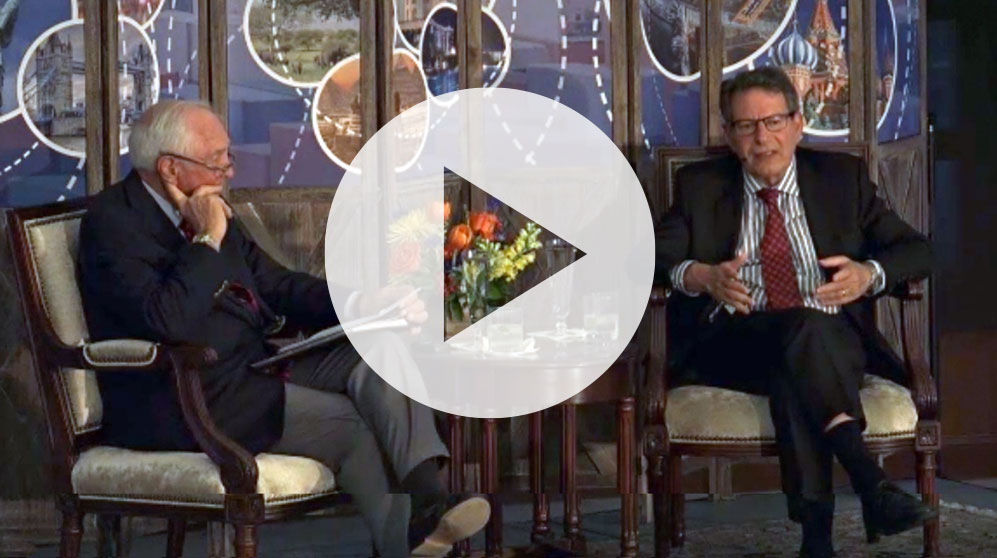Three-Year Economic Outlook Summary (2020-2022)
• 5 min read

Get the latest in Research & Insights
Sign up to receive an email summary of new articles posted to AMG Research & Insights.

INTRODUCTION TO THE SCENARIOS
AMG National Trust (AMG) has developed seven scenarios to illustrate different paths that the economy may take over the 2020 through 2022 period. Our Base Case, or most likely scenario is that of a Prolonged Expansion. Each scenario’s three-year economic and two-year asset class performance projections provide the expected return information required for the formulation of a client’s efficient frontier.
ECONOMIC BACKDROP FOR SCENARIOS
AMG constructs several economic scenarios in order to project the most likely central tendencies of investment results for various classes of assets under a number of future economic developments. The multi-scenario approach allows an examination of the probable effects (both good and bad) of the most prominent known risks that lie on the path of the economy and investment returns. The future course of the economy is always uncertain, but it is likely that economic growth, though not necessarily steady, will trend upward over the 2020 through 2022 period. Our Base Case projects growth that, on average, tracks the growth of the sustainable economic capacity of the economy. It is almost certain that this will be less than the average growth experienced over the post-WWII period. Judging by historical experience, the path of growth will not be smooth. It is also far from certain, as AMG’s various scenarios demonstrate. Although both growth and investment returns have upside potential, volatility should be anticipated. Investments in the most popular and liquid domestic asset classes will probably track trends for annualized percentage total returns that are in the single-digits.
The overall result for each scenario, depends on the starting point, so it is appropriate to offer a brief summary of broad economic conditions in early 2020. After setting a record for the longest continuous expansion in July 2019 the economy has continued on a growth trajectory. By the beginning of 2020 total economic output was very close to most experts’ estimates of its sustainable maximum output. Consumer spending and housing activity was well-supported by favorable household finances. Strong demand for labor had pushed the unemployment rate to its lowest level in more than fifty years. Numbers are not yet available, but household net worth most likely reached a record high in the fourth quarter of 2019. Meanwhile, household leverage had fallen to pre-Great Recession levels and household debt service, relative to disposable income, was near three-decade lows. Business fixed investment emerged from the doldrums to achieve a year-over-year advance of more than 4.8% (net of inflation) in 2017 and 6.8% in 2018. However, it stumbled through most of 2019 as policy uncertainty, particularly related to tariffs, and one-off events such as the grounding of Boeing’s 737 MAX aircraft, took a toll. More broadly manufacturing activity both in the United States and in foreign countries weakened considerably, slowing global economic growth.
Although international trade policy was disruptive during 2019, late-2019 and early 2020 developments indicate that the intensity of tariff disputes had eased. At the same time, fiscal and monetary policies appeared to be largely supportive for continued economic growth. Prior tax legislation promised continued relief for both individuals and businesses in the form of lower tax rates, along with various other provisions that created incentives for business capital investment. Federal budget legislation passed in 2019 headed off a drop in discretionary federal spending and provided potential for a small fiscal stimulus through the fiscal year that ends September 30, 2021. Policymakers at the Federal Reserve (Fed) took a U-turn during 2019, cutting the target range for the federal funds rate (the Fed’s short-term policy rate) three times. At the beginning of 2020 the real fed funds target (i.e. the nominal rate less inflation) was slightly negative. Also, excess reserves in the banking system were more than adequate to support any likely level of increased household or business loan demand, and the Fed hinted broadly that it was not likely to raise rates any time soon, perhaps not at all during 2020.
2020-2022 ECONOMIC SCENARIOS
Prolonged Expansion (AMG’s Base Case)
The U.S. economy set a new longevity record for an expansion period in mid-2019, and as 2020 begins it is in a good position to prolong growth in output. At the start of 2020 total production of goods and services (real GDP) is at its long-run sustainable level (potential GDP). Furthermore, economic growth is robust and on track to exceed growth of potential GDP slightly in 2020, while remaining close to it in 2021 through 2022. Favorable labor market conditions and household finances, supplemented by low interest rates, buoy consumer spending growth and residential investment. Business fixed investment, having just turned the corner in late 2019, maintains a solid growth path as capacity constraints and labor shortages require additional capital assets. Fiscal and monetary policies are largely pro-growth. Consumers and businesses continue to benefit from the Tax Cuts and Jobs Act of 2017 (TCJA). Federal spending tracks the upwardly revised spending caps in the Bipartisan Budget Act of 2019 (BBA), and subsequent budget legislation keeps current federal programs intact. The intensity of trade policy disputes diminishes; tariffs are essentially capped. Though not eliminated, related policy uncertainty and its negative impact on capital spending are reduced. Employment growth moderates. Still, the unemployment rate remains very low. Wages and price continue to edge slowly upward, but inflation does not differ materially from the Fed’s target. Consequently, policy interest rates remain on hold for some time and are increased only slightly through 2022.
Other Scenarios Explored (summaries of these are in full Outlook Report)
- Very Low Inflation and Interest Rates Persist
- “Trade Wars” Redux
- Growth Accelerates
- Recession
- Foreign Economic Growth Takes a Hit
- Inflation Surprises to the Upside
To receive a full copy of the Summary or the entire 16-page “Thee-year Economic Outlook (2020-2022)” report, contact your AMG advisor or submit a request for more information.
This information is for general information use only. It is not tailored to any specific situation, is not intended to be investment, tax, financial, legal, or other advice and should not be relied on as such. AMG’s opinions are subject to change without notice, and this report may not be updated to reflect changes in opinion. Forecasts, estimates, and certain other information contained herein are based on proprietary research and should not be considered investment advice or a recommendation to buy, sell or hold any particular security, strategy, or investment product.
Get the latest in Research & Insights
Sign up to receive a weekly email summary of new articles posted to AMG Research & Insights.




